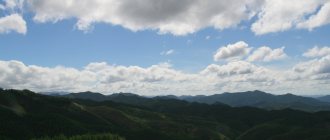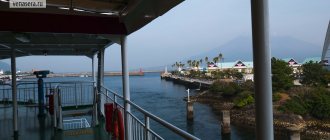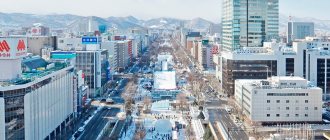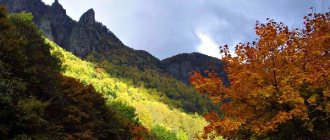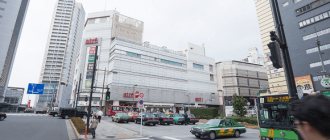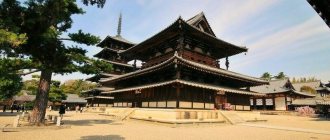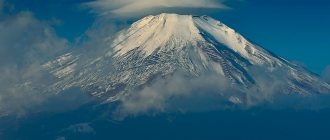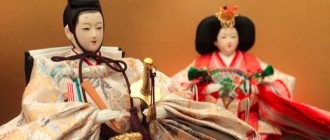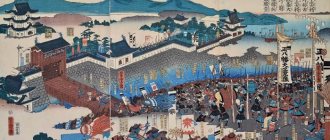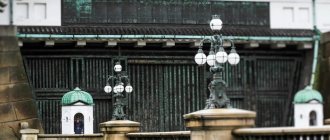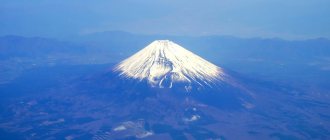Hakone from A to Z: map, hotels, attractions, restaurants, entertainment. Shopping, shops. Photos, videos and reviews about Hakone.
- Last minute tours
around the world
The Japanese call Hakone one of the best resorts in the country. The reason is that there is everything here for a traveler to feel the spirit of the Land of the Rising Sun with the attributes of relaxation familiar to Westerners: many historical monuments are adjacent to modern spa complexes, traditional hotels are next to open-air museums. The city of Hakone itself is located relatively close to Tokyo, which also affects its popularity among tourists. But still, the most important reason to come here is to see the iconic view of Mount Fuji, which is probably familiar to every schoolchild. What makes Hakone unique is its dozens of hot springs, each of which has a unique mineral composition.
How to get to Hakone
The journey to Hakone begins in Tokyo. You can read more about how to get to the capital of Japan here.
Express trains run between Tokyo Shinjuku Station and Hakone Station. A trip lasting 1 hour 25 minutes will cost 4100 JPY. The slower train takes about 2 hours, but costs 2050 JPY. Prices on the page are as of September 2018.
Buses also run from Shinjuku to Hakone every 30 minutes. The trip will take approximately 2 hours (if there are no traffic jams) and will cost 2050 JPY.
- Is it possible to get from Hiroshima to Hakone using the JR Pass
Find cheap flights to Hakone
Hakone Outpost Museum
In the old days, during the Edo period (1603-1868), the Hakone outpost served as a military fortress. A little later, it began to be used as a customs office, where travelers with their belongings were examined. The guards who were stationed at the outpost made sure that weapons were not brought into Edo, and that the households of the shogun daimyo did not run away from Edo - in case they decided to rebel. The outpost also monitored traffic along the Tokaido Highway, which connected Edo and Tokyo.
Here you can plunge headlong into the Edo era, because the museum exhibits over a thousand exhibits, including spears, swords and other weapons of that time, as well as official decrees. There are also figures of samurai officials who inspected travelers. Women were examined most thoroughly, even their feet and hairstyles were examined. This museum very realistically reproduces the Edo period and is quite popular among tourists.
The museum is open from 9:00 to 17:00. And from December to February, opening hours are from 9:00 to 16:30. Ticket price is 500 yen.
What to see
Many of Hakone's tourist spots can be reached by the Regional Railways' unique train, the Hakone Tozan. Its peculiarity is that while climbing the mountain serpentine starting from the entrance to the town, it changes its direction to the opposite three times. This is the steepest railway line in Japan: the height difference is 80 m per 1 km of track.
From the window of the train, which is laboriously climbing up, one can see the mesmerizing landscapes of the valley of the Haya Kava River strewn with lush greenery.
Hakone has attracted travelers for centuries with its hot springs. Today you can enjoy them in many spa complexes and ryokans (traditional Japanese hotels) in the city. The most famous and oldest spring in the region is Yumoto. The water quality here is high and there are a large number of baths and pools. A special concentration of hot springs is along the shore of Lake Ashi and on the slopes of numerous mountains.
You can heal your body and mind with healing water in public baths or ryokans. By the way, most of the latter offer access to the baths to everyone, and not just their guests. True, if hotel guests relax in hot baths for free, then ordinary tourists must buy tickets costing from 1500 to 2950 JPY.
Hakone Gongen Shrine
The sanctuary is also known as the Temple of the Nine-Headed Dragon (Kudjuro-jinja), it began its existence back in 757. It was previously located on Mount Komagatake, but was later moved to the shore of Lake Ashi. During its history, the temple was burned by the troops of Toyotomi Hideyoshi (late 16th century), but in the same century, Tokugawa Iesu ordered its restoration and honored it throughout his life. The shoguns who succeeded each other after Tokugawa's death continued to protect the shrine.
Hakone Gongen gains great popularity among visitors not only due to its centuries-old history, but also thanks to the avenue of cedars. Its length is more than one kilometer. It is known that the oldest cedar is 600 years old and has a diameter of 4 meters. Considering that the air in the alley is recognized as healing, local authorities are trying to increase the number of trees (there are only 1020 of them). The shrine is also famous for the Hakone-Yumoto Springs and the museum that houses the treasures of Hakone-jinja.
Things to do
Besides soaking in the many hot springs, tourists have many other options for spending time in Hakone.
The local landscape is ideal for hiking. You can go along your own route - wherever your eyes take you. Or you can visit, for example, the tourist center in the village of Togendai and get acquainted with the layout of the surrounding area of Hakone with hiking trails marked on it.
One of the most popular routes starts here in Togendai and goes to the village of Owakudani. From there, the trail goes to Mount Komagatake, along the way capturing the tops of the Kanmurigatake and Kami hills. From Komagatake you can take the cable car down and return by bus to Togendai (the last cab departs from Komagatake at 16:50). This hike takes 3 hours and allows you to get acquainted with the natural features of Hakone. Moreover, trekking boots are not required - comfortable sneakers are enough.
After your hike or the day after, you can visit the Hakone Open Air Museum. The creators of the exhibition managed to maintain harmony between the art objects and the nature surrounding them. The museum is located next to Chokoku No Mori Station of the Hakone Tozan Regional Railway. It's only a 30-minute drive from Hakone. Ticket price: 670 JPY. The museum has several exhibition spaces, both outdoors and in pavilions.
The Picasso exhibition hall presents art objects related to the work of the great artist, as well as photographs telling about his life.
The emerald lawns of the open-air museum are dotted with abstract art objects from Japanese and foreign artists. One of the largest is the Symphonic Sculpture. It is a tower-like hollow structure so that visitors can enter inside. A spiral staircase leads to the top of the tower. The walls of the Symphonic Sculpture are decorated with beautiful stained glass windows. At the very top there is an observation deck, which offers a wonderful view of the park and the surrounding mountains. The museum has shops and cafes. There is also a children's playground.
Trip to Hakone
People who have never planned a trip to Japan have heard little about Hakone. Hakone is not shown in films and anime (or is rarely shown), and they do not write about him in books. But Hakone is often recommended to be included on your very first trip to Japan. Why? Firstly, Hakone is located between Tokyo and Kyoto - it’s logical to stop by. Secondly, Hakone is a great way to enjoy several types of Japanese countryside holidays in one day. There are mountains, geysers, a lake, a forest and ryokans with hot springs. And throughout all this there was a clear circular route for exactly one day: I rode along it and saw everything. There is even a chance to look at Fuji (if you're lucky with the weather).
Hakone also has a few pitfalls. Firstly, this is a well-publicized resort, so the prices for ryokans and hotels in Hakone, in my opinion, are 20 percent higher than in other (even cooler) onsen villages. Secondly, getting to Hakone has to be a little strange: with two or three transfers, and this cannot be avoided. Thirdly, Hakone is not so much a specific town or village, but rather a huge territory on which hotels and ryokans are scattered in small nests. Many simply do not have any shops or restaurants nearby. If a room is booked without dinner, this could be a problem. Fourthly, public transport in Hakone is poor in the evening (the cable car stops at 17:00, the last buses on some routes leave around 18:00), so it is best to count on the fact that you will already be at your ryokan by five o'clock.
I went to Hakone this year primarily to show my parents the Japanese countryside holiday experience. For such a purpose, this very circular route is optimal.
First, we traveled from Tokyo to Odawara Station by Shinkansen using the JR Pass (if you don’t have it, you can either use regular trains - it’s not far, there’s no need to overpay for the Shinkansen; or go from Shinjuku on a special Romance Car train directly to Hakone-Yumoto; he, however, he rarely walks).
I bought a Hakone Pass for two days for 4,000 yen right at the station building. It gives you the right to travel on all trains, funiculars, boats and almost all buses, as well as discounts or free entry to museums. A very useful and profitable thing.
This is a map of transportation within Hakone where the Hanone Pass is valid.
At first I wanted to cheat the system and get to the ryokan by bus (the Japan Travel app found me a suitable direct route), but alas, it turned out that this particular bus route was not included in the Hakone Pass, so I had to take a connecting train (Odawara - Hakone- Yumoto - Gora - Naka Gora). By the way, the pass comes with a detailed paper map of the area with all the routes, so it’s impossible to get lost.
(By the way, there is another version of the Hakone Pass that is sold in Tokyo and includes travel from Shinjuku to Odawara on regular trains, not the Romance Car. But in most cases it is not very useful.)
The first section - from Odawara to Hakone-Yumoto Station - is very short and ordinary, and after this passengers are very conveniently transferred to another train to Gora Station.
Only in it did I understand why it was impossible to simply run one direct train from Odawara to Gore and not arrange an extra transfer. The fact is that this second line is laid along a kind of mountain serpentine. And since, unlike a car, the train cannot turn around on a spot, from time to time it comes to a dead end, turns the arrows and starts driving backwards up the hill, then again comes to a dead end, turns the arrows and goes forward again. And so on several times. And the train with the carriages are specific, made specifically for this task. Fun, but very slow.
At the Gora station, passengers are also quickly and conveniently transferred to the cable car cabin. In it, the trailers are pulled along the ground by a rope, and the slope is small (not a mountain-mountain). We only had to go three stations, and on the map everything looks very close. But it would be hard to walk this miserable kilometer (we tried it later and didn’t like it), so I recommend everyone to count on the cable car from the Mountain (but you can go back, from the hotel to the station, on foot).
I studied the reviews and chose this ryokan near the Naka Gora cable car station for two reasons. Firstly, they definitely gave out beautiful yukatas (and not just everyday yukata nighties) that you could wear to dinner. Secondly, the room rate includes 45 minutes in a private onsen (family bath). We had two numbers - respectively, two slots. Of course, you can’t intimidate me with naked Japanese women, but I wanted it to be easier for my parents the first time.
(Update: I saw in the comments that they didn’t quite understand me. In this ryokan, the general onsen is separate. Boys are separate, girls are separate. I just wasn’t sure that my mother would be comfortable with naked Japanese girls. That’s why it’s private. However, After the private one, she still went to the general one, the view is better there. And the general onsen, where M + F, is another story, in this one I was here and sat in the spring with a live naked young Japanese woman, yes).
Why in this area, if hotels and ryokans are scattered over a huge area? There are many different places to live in Hakone - for example, there are relatively inexpensive options on the northern shore of Lake Ashi near the cable car to Owakudani. But this is very far from the railway station, and I didn’t want to rely purely on buses. You can also live north of Gora Station (and go there by bus), near Hakone-Yumoto Station (perhaps the easiest option in terms of logistics) and on the southern shore of Lake Ashi (a good option, but it was not very clear what was going on with the onsen ). Ultimately, I decided that since Gora Onsen is called Gora Onsen, and has a bunch of cool ryokans, it was the best option to be closer to the water source.
We brought our things to the ryokan at 12 o'clock in the morning, left them there and immediately went for a ride in a circle. The first thing we did was take the cable car from Naka Gora to Sonzan to transfer to the cable car. In it you are put in a small cabin for 12 people and beautifully lifted to the top of the mountain. At one point you're flying right over the hellish valley of death, where geysers erupt (you're even given a damp cloth in case of toxic gases escaping), and then you find yourself in souvenir heaven.
View this post on Instagram
People emerge from the cloud of steam from the geysers. #japan #owakudaniA post shared by Konstantin Govorun (@litewren) on Oct 11, 2018 at 10:16pm PDT
View this post on Instagram
Martian landscape. #owakudani #japan
A post shared by Konstantin Govorun (@litewren) on Oct 11, 2018 at 10:12pm PDT
At the top of the mountain, everyone is required to eat a black egg boiled in the crater of a volcano. In fact, not in the crater, of course, but the valley itself (you can clearly see it from above) looks very cool, and the egg serves as a kind of symbol that you have tried this valley.
View this post on Instagram
An egg boiled on a volcano. #japan #owakudani
A post shared by Konstantin Govorun (@litewren) on Oct 11, 2018 at 10:17pm PDT
You can also take a photo with the egg.
View this post on Instagram
Inspecting geysers in #owakudani #owakudani
A post shared by @luckydakk on Oct 11, 2021 at 10:48pm PDT
You can admire the valley from above, or you can take a walk and get closer to this hell.
Unfortunately, when we were there, the closer routes were closed due to the volcanic gases being too strong. Even in the funicular they handed out protective masks just in case.
